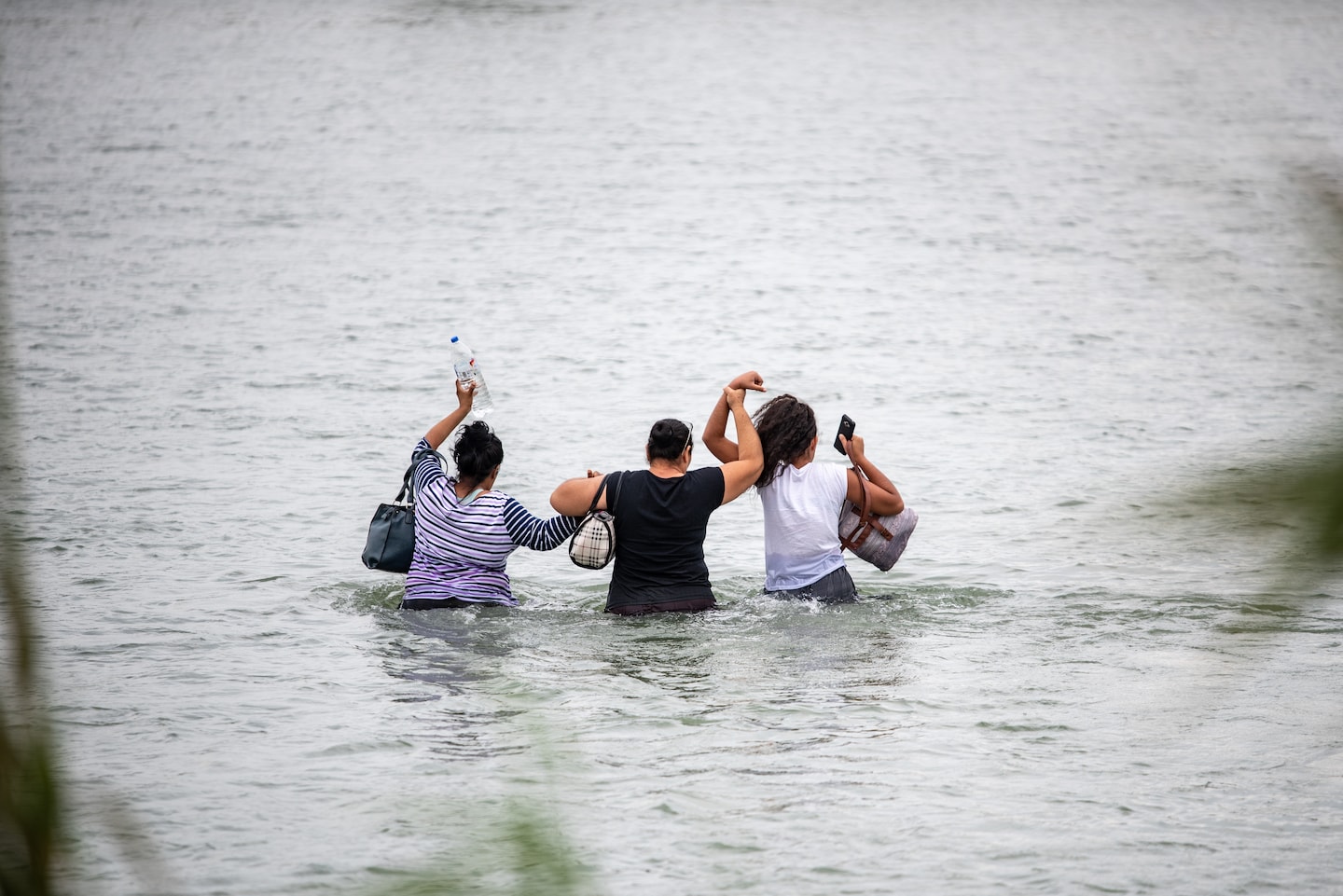Trump administration now wants a floating border wall to seal off waterways along Mexico boundary

President Trump’s $15 billion border wall project includes about 275 miles of newly completed barriers thus far, and Department of Homeland Security officials say they are on track to finish another 175 miles by the end of the year. The floating barriers described in the contracting bulletin would be in addition to those on dry land.
Such floating barriers or river-based deterrents could allow the U.S. government to block migrants from fording waters along stretches of the Rio Grande where it is difficult or impossible to build steel barriers on the shoreline. It also could provide the U.S. government a way to install some form of a barrier in areas of Texas where private owners have resisted efforts at eminent domain seizures or proposals to build structures and roadways on their properties.
John Mennell, a CBP spokesman, said the purpose of the solicitation is to gather information from private industry about the feasibility of the project.
The U.S. Border Patrol, Mennell said in a statement, is seeking to “impede and deny illicit activity in waterways, including but not limited to rivers, lakes, and ponds, where use of traditional land-based barriers are not practical.”
The Rio Grande makes up about two-thirds of the 2,000-mile international boundary with Mexico, and during certain times of year there are places along the river that are shallow enough for people to walk or wade through. Along the busiest stretch for illegal traffic, closer to the river’s terminus in the Gulf of Mexico, migrants and smuggling guides typically paddle through dangerous currents using cheap inflatable rafts and flotation devices, often at grave risk.
Salvadoran migrant Óscar Alberto Martínez Ramírez, 25, and his 1-year-old daughter Valeria drowned last summer trying to swim across the Rio Grande near Brownsville, Tex., and the images of their bodies face down along the banks brought renewed attention to the perils facing desperate migrants.
U.S. Border Patrol agents performed 742 water rescues last year, according to CBP data, and the agency recorded 66 drownings. The incidents also occur along the All-American Canal in California’s Imperial Valley, and in the Pacific Ocean, where the steel border fencing extends 300 feet into the crashing surf.
A buoy-anchored barrier system could stretch that barrier farther out or could block off popular crossing points along the Rio Grande.
“The U.S. government puts all sorts of buoys in the water that save lives by keeping boaters away from hazards or gathering weather data to predict storms,” said David FitzGerald, co-director of the Center for Comparative Immigration Studies at the University of California San Diego. “Imagine a floating wall explicitly designed to keep swimmers from holding on.”
The engineering and hydrological challenges of such a project would be significant. A floating barrier anchored in the river channel of the Rio Grande is likely to clog with flood debris during storms, and a system with underwater netting to block swimmers in the ocean could become choked with seaweed and other detritus.
Cochrane USA, a security company specializing in barrier design, manufactures a floating buoy system that purports to stop watercraft with “deadly hull-penetrating spikes.” The company’s floating marine barrier affords “no possible hand or foothold due to spikes and revolving buoys,” which spin 360 degrees in the water, according to the company’s website.
The company performed a product demonstration for CBP in June, according to photos posted to social media. Cochrane did not immediately respond to a request for comment Friday.
The installation of any fixed barriers in the river channel probably would require approval from the International Boundary and Water Commission, the joint U.S.-Mexico body that regulates construction and other activities along shared waterways at the border.
The Army Corps declined to comment, referring inquiries to CBP.
The solicitation does not include any images or sketches of possible barrier designs, and there is no indication the floating barriers would include components to prevent drownings. The specifications call for a design that would prevent swimmers from climbing up onto the structure.
Mennell said its purpose would be to discourage migrants from entering the water on the Mexican side of the border to even try crossing to the U.S. shoreline.
“Waterways along the southwest border present a danger to migrants attempting to illegally cross the border,” he said. “Smuggling organizations guide vulnerable families and children to these waterways that may appear placid on the surface but have dangerous currents and other dangers beneath the surface.
“The water barriers are expected to improve agent safety by providing an added level of impedance, denial and deterrence in waterways at the immediate border,” Mennell said.
CBP wants the floating barrier system to allow agents to spot attempted breaches “and withstand attempted breaches against any sophisticated equipment designed to breach such a barrier,” the bulletin states.
In one indication of the structural challenges to keeping such a barrier from being swept away, the solicitation states that its anchoring system should be “rated to withstand up to 25 metric tons” of force.






